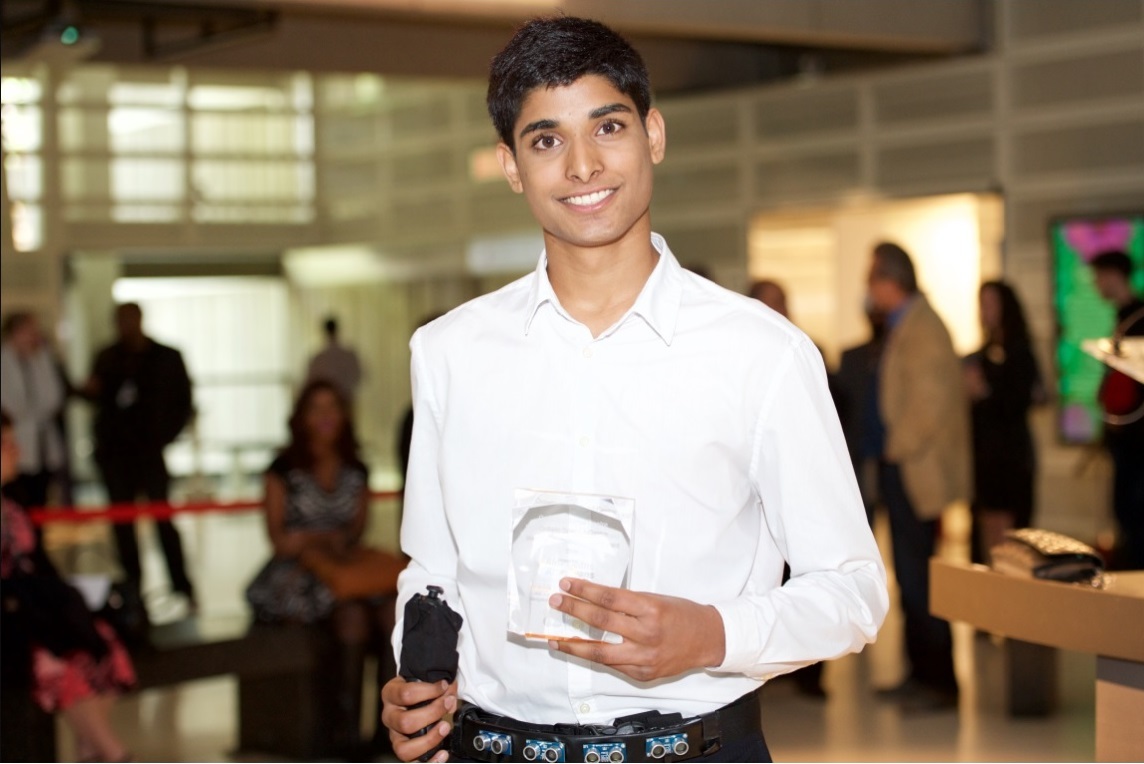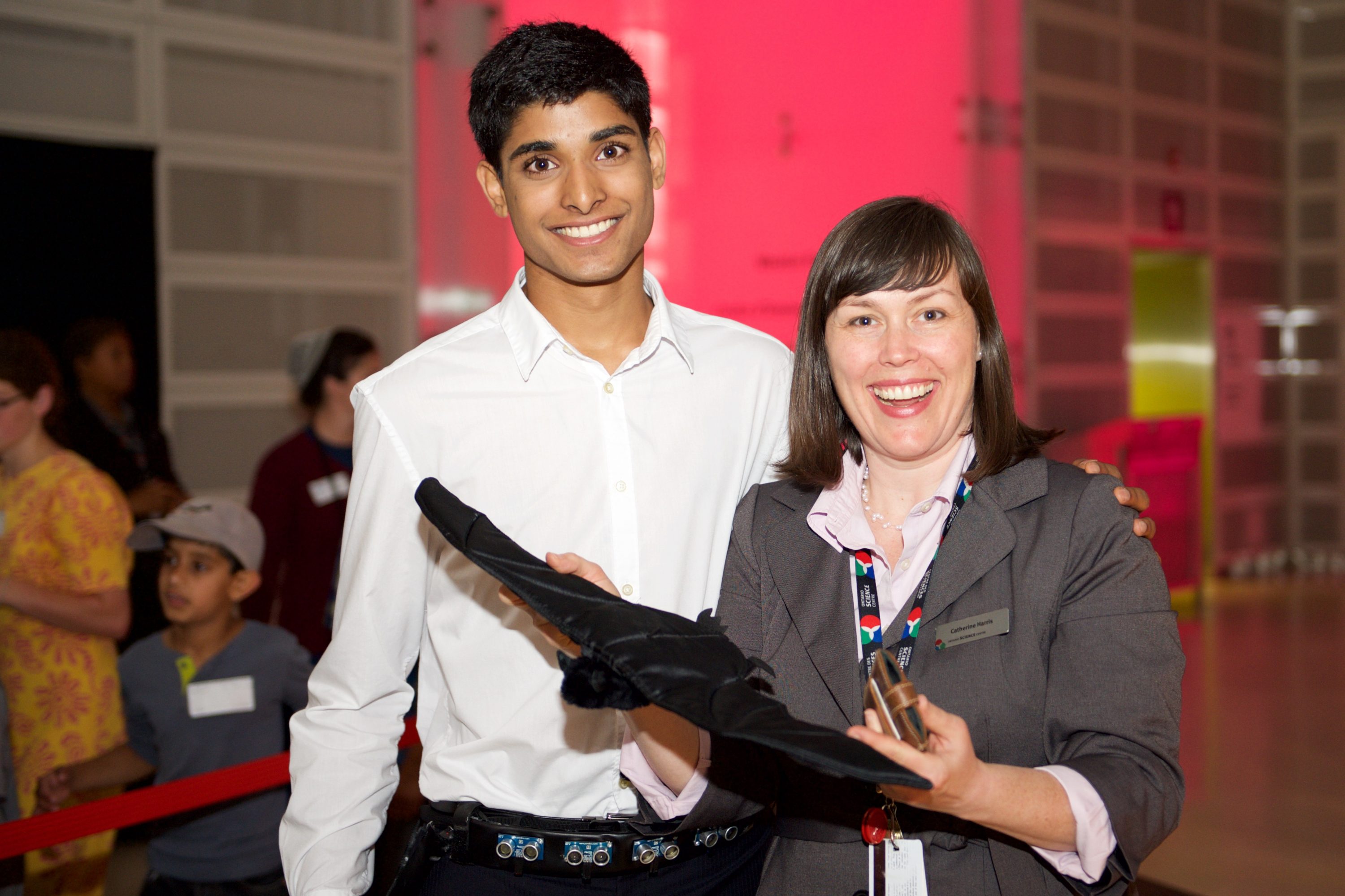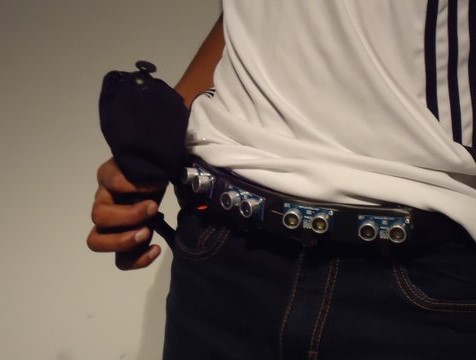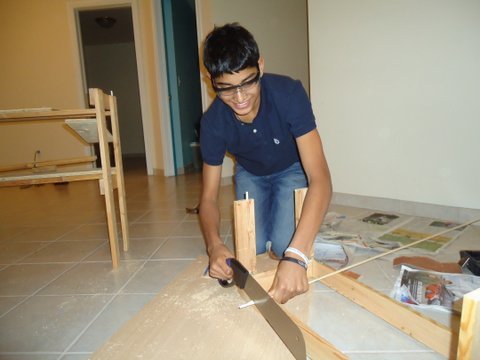This article is dedicated to someone who will never see it. Her eyes will never decipher the meaning behind each symbol and squiggly line we affectionately call letters. She will never stumble across this article on the internet scrolling down her Facebook page or taking a break from a Netflix binge. In fact, she may never have experienced writing, movies, art or colours at all. In fact, she is somewhere in the world, utterly unaware of the ripple effect her mundane comment has caused in the life of a 12-year-old boy.
This is the story of a blind woman who struggled to cross an intersection; and the story of an innovative young man whose life has never been the same since that fateful encounter.

In 2009, Alex Deans was with friends in downtown Windsor, Ontario, when he noticed a woman stopped at a street corner by herself for quite some time. He approached the woman, only to realize that she was struggling to cross the road because she couldn’t see the cross-walk sign. Alex gladly helped her cross the intersection. This random act of kindness sparked a brief but life-changing conversation. She told Alex that there aren’t many aids or technologies out there to help blind individuals navigate the world. That very same evening, Alex purchased a robotics kit online. He didn’t know what he was going to make of the mechanical parts or how he would program the robots; he was just resolved to invent something that would help.
A few years later, Alex’s tinkering yielded something extraordinary. At 15-years-old, he presented his invention, the iAid, to the Canadian National Institute for the Blind (CNIB). iAid and other similar wearable tech devices for the blind have helped bring the biomedical technology community one step closer to reduce the social barriers of physical inequalities for people with visual impairments.
I was lucky to get in touch with Alex. He agreed to chat with me and talk about the iAid, how it works, and it’s influence on the blind and visually impaired community. Our conversation has been condensed for length and clarity.

Claire: What is the iAid and how does it work?
Alex: The iAid is a device that attaches to your belt and uses sensors to scan a space and guides someone with visual impairments or no sight at all. In terms of how it works, the sensors on your belt do a whole bunch of fancy stuff with your phone, Google maps, and Bluetooth compass. This process is then communicated to the device, which provides feedback to your hands. The user holds a little joystick, and the joystick will swivel automatically to tell you where you need to go. So, if you walk into a room and there are a lot of obstacles on your left, and you have to get to your right, the joystick will automatically swivel to the right to steer you through the room. Outdoors, the joystick will also tilt to tell you how far away you are, and as you get closer, it approaches a more vertical position. It’s like me taking you by your hand and walking with you down the street.
Claire: That’s incredible! Can you explain how the scanning works, how long the battery lasts, and what kind of programming language it’s coded in?
Alex: Of course. First off, nature is the best. Nature has had so much time to get everything right, so why re-invent the wheel? I was watching a TV show about bats and learned how they use echolocation to navigate. I figured, if it works for bats it can work for us; we just have to learn to use echolocation in a way that we can understand. So, I used that concept and built a machine that essentially replicates this natural phenomenon found in bats. The device uses both ultrasonic and infrared waves for different purposes. Scanning is instantaneous. The device works in milliseconds, so to the human mind, the information gets to the joystick right away. Windows and clear objects tended to interfere a bit, but I’m working with a lot of new technologies now that can detect the outline of clear windows and objects so that these no longer pose a problem. The device also uses a lot of different programs and platforms because it’s using microcontrollers and off the shelf items, as well as your phone. So, it uses a combination of programming languages like C++ and Java because there are a lot of different components to coordinate. Right now, the battery consumption is around 7 hours, but I’m hoping to get it up to 11.

Claire: All that at 12? Wow. Did you get any help from your parents or a teacher at school?
Alex: Haha, more like since 12. Unfortunately, I couldn’t get any help from my parents because they’re both physicians. My dad does work with eyes though, so it was good to talk to him because I could understand the medical side, but not the technological side. I didn’t really have anyone at my school that I talked to either. Honestly, I went online a lot of the time. I talked to a lot of inventors from South Africa, Argentina, the UK, and they were kind of my mentors. They help me put everything together and understand the process.
Claire: How many prototypes did you have before you achieved a successful device?
Alex: Hmm, every iteration was a new prototype. Every time I changed the range of a sensor, every time I added a new sensor, every time I made the joystick more responsive… they were all considered new prototypes that I would bring back to people, test, get feedback, and then rework it. So, there were a lot of prototypes. I couldn’t even count because it’s been going on for two or three years now, but definitely in the hundreds.

Claire: And who did you test the device on? Did you test this invention on people who were born blind or people who progressively lost their sight?
Alex: Actually, it was tested on the whole spectrum. iAid was tested on people who are blind at birth, or partially sighted at birth, all the way to people suffering from degenerative sight diseases (people progressively losing their sight until they became completely blind). Every type of visual impairment has been accounted for. The goal is that iAid can be used by people across the board because it’s designed to replicate a human’s 180-degree visual field.

Claire: You’ve really thought of everything with this device. Will I be seeing people walking around with an iAid soon? Is your invention being integrated into the blind and visually impaired community?
Alex: Yes, iAid is being integrated into the blind and visually impaired community. We are piloting lots of different aspects of the product right now so that it’s protected, and so that we can get it out onto the market. The hope is that people can use this device to replace the guide cade or the guide dog. At least, that’s the vision for the next couple of years. Of course, there are a lot of obstacles before we get there. The device has to be able to read cars, pick up curbs, and stuff like that, in order to pass the test. That’s what I’m in the thick of right now.
Claire: Very cool. And who would you dedicate your invention to?
Alex: Easy question. The first woman that I met who was blind. She started it all; she was the spark. One of my biggest regrets is never actually taking her name down. We talked for maybe 6 or 7 minutes, and then I never saw her again. I do wish that I had the foresight to get her contact information. The hope is that someday I will hear from her.
This article is dedicated to someone who will one day, hopefully, hear it. Thank you to the woman whose everyday interaction with a young man sparked a revolution in technology for the blind. Their story is a tribute to the banal, mundane conversations we have with strangers on the street, in the bus, or at a coffee shop. Is it possible that these seemingly inconsequential exchanges are carefully orchestrated by some incarnation of fate or destiny? It’s impossible to know what Alex Deans’ life would be today if he hadn’t noticed the woman standing patiently at an intersection 8 years ago. What Alex Deans does know is that he’s grateful to have been at the right place, at the right time, and would love to thank this unknown individual in person.
Help us find the woman who inspired the invention of iAid. Share this article and spread the word. The more people know about iAid, the greater independence blind and visual impaired individuals will have. Moreover, it’ll will increase the possibility of Alex Deans reuniting with the fateful woman who sparked his revolutionary invention. He hopes to thank her in person and give her an iAid. This search may be a lost cause, but much like the alternative timeline in which Alex doesn’t help a blind woman cross the street, we won’t know what cosmic fate the future has planned unless we try. Please help.
If you are a blind or visually impaired female who was at the corner of Ouellette St. and University Ave., in Windsor, Ontario, in July of 2009, please contact Alex Deans through his website at https://www.alexdeans.com/ .
Editors note: The opinions expressed here by Impakter.com columnists are their own, not those of Impakter.com –Featured photo credit: Alex Dean










